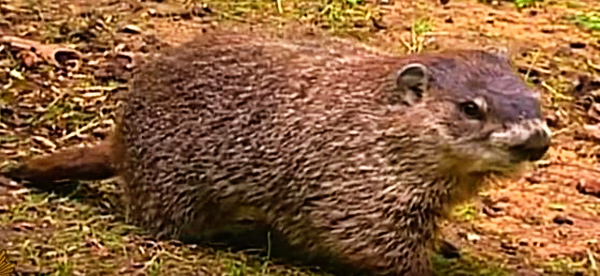- info@wildlifeanimalcontrol.com
Call us for help in your town
Wildlife Control Education
Why do groundhogs dig?
Groundhogs are known to be the most excellent diggers; they are capable of making both simple and very complex burrows that are used for different purposes. Most burrows dug up by groundhogs are usually from two to five feet deep with a length of approximately thirty feet. These burrows usually have several entrances but in most cases you will come across two entrances leading to a single burrow. Their main entrance is usually visible in the sense that there is always a very big mound of freshly dug soil and other dirt.

The other entrance points dug are not very visible because they act as escape routes when their homes have been invaded by enemies.
Groundhogs usually use the dug burrows for sleeping, hibernating or raising their young ones. Groundhogs usually dig very large burrows that are later on partitioned to serve different purposes. Typically, you will find two main chambers; the nesting chamber whose main function is sleeping and also raising their young ones and an extreme chamber that is used as toiletry. The burrows dug by groundhogs slightly differ but they all have entrance points, a hole that is used for spying purposes, a nest for resting and another chamber that is used as a toilet.
Hibernation
Since groundhogs are one of the few animals that enter true hibernation, they usually dig separate burrows commonly referred to as winter burrows. They are witty animals therefore they will dig the burrows in areas that either woody or bushy. The burrows are then built below the frost line which allows the burrows to maintain constant warm temperatures during the extreme winter periods.
Diurnal animals
Groundhogs are accustomed to digging because they are diurnal animals, the burrows and dens that they build also act as homes to other small animals once they abandon them because they are usually dug deep into the ground.
Learn more: The Soundless Barrier
Historically, groundhog burrows have led to revelation of an archeological site, as they dug burrows into the soil that brought to the surface significant artifacts that are believed to be archaeological. They are also known to have dug small ridges that have led to the introduction and important historical sites.
It is therefore the nature of all groundhogs to dig in that when the young ones have reached maturity, the first technique that they are taught by their mothers is how to dig burrows in the ground. They are also taught on how to come up with the appropriate chambers that are either used for nesting or toiletry.
While digging, groundhogs entirely depend on their sense of smelling and hearing to locate possible dangers within the vicinity. Apart from being perfect diggers, they are also good defenders of their burrows.
Go back to the How to get rid of Why do groundhogs dig? home page.
Need groundhog removal in your hometown? We service over 500 USA locations! Click here to hire us in your town and check prices - updated for year 2020.

















